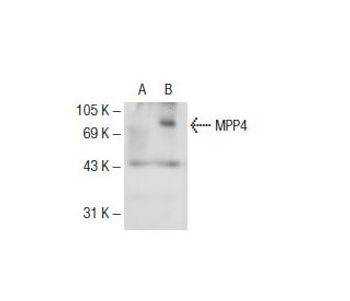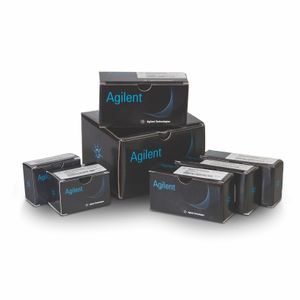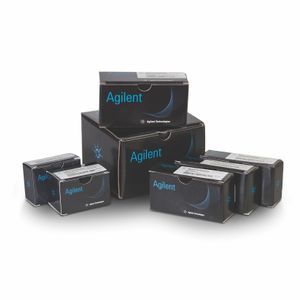
MPP4 (B-2) Alexa Fluor® 546 | Santa Cruz Biotechnology
mouse monoclonal IgG2a; MPP4 Antibody (B-2) is an IgG2a κ mouse monoclonal MPP4 antibody (also designated MPP4 antibody) that detects the MPP4 protein of mouse, rat and human origin by WB, IP, IF, IHC(P) and ELISA. MPP4 Antibody (B-2) is available as both the non-conjugated anti-MPP4 antibody form, as well as multiple conjugated forms of anti-MPP4 antibody, including agarose, HRP, PE, FITC and multiple Alexa Fluor® conjugates. Progression of cells from interphase to mitosis involves alterations in cell structures and activities. The transition from G2 to M phase is induced by M phase-promoting factor (MPF). In M phase, many proteins are phosphorylated directly by MPF or indirectly by kinases activated by MPF. These M phase phosphoproteins (MPPs), also known as MPHOSPHs, permit disassembly of interphase structures and generation of M phase enzymatic activities and structures. MPP4, also known as membrane protein, palmitoylated 4, MAGUK p55 subfamily member 4, ALS2CR5, discs large homolog 6 (DLG6), or amyotrophic lateral sclerosis 2 chromosomal region candidate gene 5 protein, is a 637 amino acid protein and member of the MAGUK family that localizes to cytoplasm and likely plays a role in the development of retinal photoreceptors. MPP4 is highly expressed in retina, and weakly expressed in testis and brain. MPP4 contains one guanylate kinase-like domain, one SH3 domain, one PDZ (DHR) domain and two L27 domains. Due to alternative splicing events, five MPP4 isoforms exist. Studies suggest MPP4 may be responsible for autosomal recessive retinitis pigmentosa 26 (RP26), as the two genes co-localize on human chromosome 2q33.1.





















































